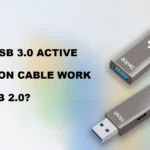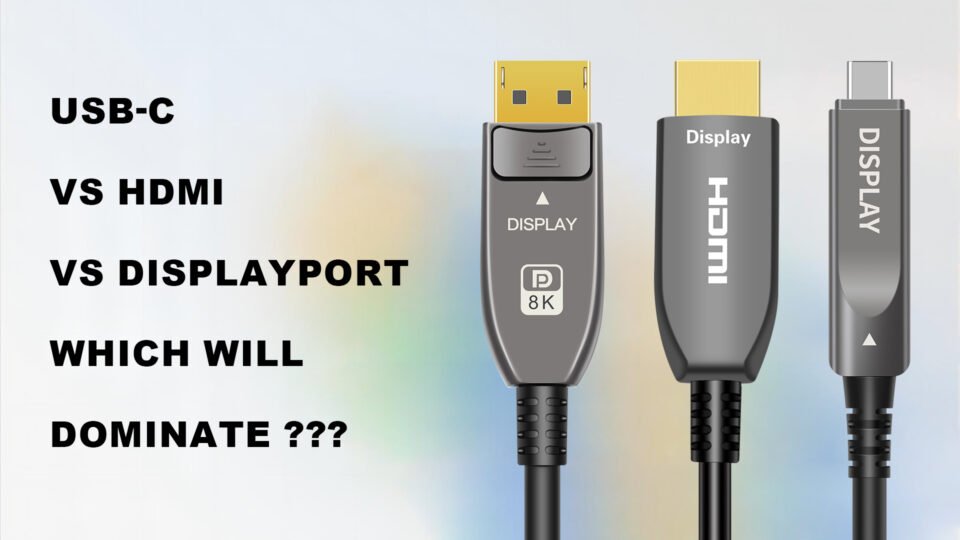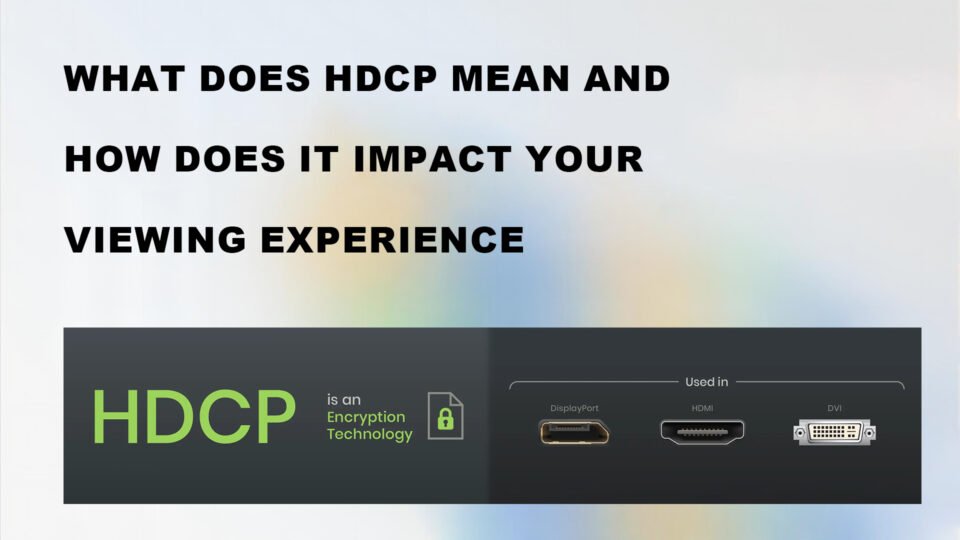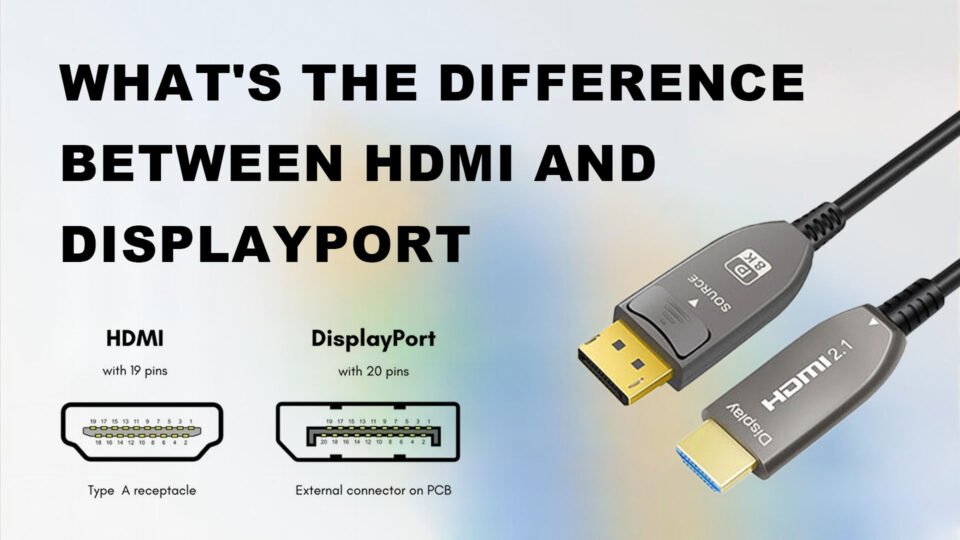- 1. Understanding USB Technology (or: What is USB?)
- 2. Comparison of Different USB Versions
- 3. USB Cable Types
- 4. What is Active Optical USB (AOC USB)?
- 5. Applications and Uses of Active Optical USB Cable
- 6. Comparison Between Fiber Optic USB and Copper USB
- Conclusion
- FAQ
- Prodotti pertinenti
- More Options
In the rapid advancement of modern technology, the demand for data transmission speed and connection efficiency is growing exponentially. The emergence of Active Optical Cable (AOC) technology has brought about a revolutionary transformation in USB connectivity. By integrating optical fibers into the cable design, Active Fiber Optic USB Cables achieve unprecedented levels of data transmission speed and distance, significantly surpassing traditional copper cables.

Traditional USB cables often struggle with data integrity and electromagnetic interference during long-distance transmission, but these limitations are being addressed by innovative active optical technology. Supported by an ultra-thin design, lightweight materials, and the latest protective measures like armored TPU, AOC USB Cables can achieve data transmission speeds of up to 10 Gbps over distances exceeding 300 meters. This advancement is crucial for applications like data centers and professional audiovisual equipment that require high data throughput. Meanwhile, with the widespread use of desktop computers, mobile devices, gaming consoles, home audio and video systems, and vehicles, USB ports and cables have become indispensable.

USB-C, as the latest USB interface, complements active optical technology by supporting multiple data types, including audio, video, and high-definition multimedia. The combination of USB-C’s flexible connector format with AOC’s high-performance transmission capabilities establishes a new standard for modern technological demands.
Transitioning to active fiber optic USB is not merely a technical upgrade; it signifies significant progress in meeting the growing demands of power-hungry, data-intensive environments and ultra-long-distance data transmission.
Of course, in order to fully appreciate the unique features of active optical USB, it is essential to first understand what USB itself is.
1. Understanding USB Technology (or: What is USB?)
With the development of information technology, USB (Universal Serial Bus) has become the standard for connecting a variety of devices and interfaces. Throughout its evolution, USB technology has continuously adapted to meet modern demands.
1. The Historical Evolution of USB
USB technology was first introduced in 1996, aiming to unify connection interfaces across devices and simplify user experiences. Early versions, such as USB 1.0 and 1.1, significantly reduced the complexity of data transfers, providing an efficient way to connect computers and peripherals. As technology progressed, USB continued to evolve, introducing higher versions like USB 2.0 and USB 3.0, enhancing data transfer speeds and expanding functionality to meet the growing needs of users.

2. Types of USB Cables
Cavi USB are categorized by their connector shapes and functionalities, including USB-A, USB-B, and the newer USB-C. USB-A is the most common rectangular connector, widely used in computers and power adapters. USB-B is typically used for larger devices like printers. USB-C, as the latest standard, is widely adopted for its reversible double-sided plug design, support for higher power transmission, and faster data transfer rates. Its compatibility and versatility have swiftly made it mainstream in today’s market.
3. Importance of USB Standards
The evolution of USB standards is critical, providing clear specifications for device performance and functionality, from the low speeds of the initial 1.0 version to the high-speed, multi-channel data transmission capabilities of today’s USB 4.0. Each upgrade has brought significant improvements in data transfer rates and power delivery capacity. For instance, USB 3.0 introduced the “SuperSpeed” transfer mode, while USB 4.0 has integrated the Thunderbolt 3 protocol, greatly enhancing data transmission efficiency and offering high power support to meet the demands of increasingly complex devices.
2. Comparison of Different USB Versions
USB technology has undergone multiple version updates, with each upgrade delivering enhanced performance and efficiency.
| USB 1.0/1.1 | USB 2.0 | USB 3.0 USB 3.1 Gen1 USB 3.2 Gen1 |
USB 3.1 USB 3.1 Gen2 USB 3.2 Gen2 x1 |
USB 3.2 USB 3.2 Gen2 x2 |
USB 4 | USB 4 Version 2.0 |
|---|---|---|---|---|---|---|
| 1.5 Mbps 12 Mbps |
480 Mbps | 5 Gbps | 10 Gbps | 20 Gbps | 40 Gbps | 80 Gbps |
 |
 |
 |
 |
 |
 |
 |
 |
 |
 |
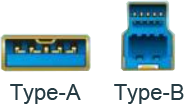 |
– | – | – |
 |
 |
– | – | – | – | – |
 |
 |
 |
– | – | – | – |
| – |  |
 |
 |
 |
 |
 |
1. USB 1.0 and USB 1.1
USB 1.0, the initial version of the USB standard, was introduced in 1996 with data transfer speeds of 1.5 Mbps (Low Speed) and 12 Mbps (Full Speed). While the transfer speeds were relatively low, they were sufficient for connecting basic peripheral devices to computer systems, such as keyboards, mice, printers, and various external storage drives. USB 1.1 was launched in 1998 and can be identified by its unique square shape and accompanying symbols. Although it maintained the same transfer speeds, it improved compatibility and stability, becoming widely accepted in the market.
2. USB 2.0
Introduced in 2000, USB 2.0 represented a significant upgrade to the USB standard. In addition to supporting the Low and Full Speed modes, it included a new “High Speed” mode that boosted data transfer speeds up to 480 Mbps. This version greatly enhanced data transfer efficiency, enabling support for more types of devices and expanded applications, such as external hard drives and high-resolution cameras. USB 2.0 remains one of the primary and popular standards for computer and device interfacing, with most computers still retaining USB 2.0 ports. From a broader perspective, USB 2.0 was a revolutionary invention in the field of connectivity, simplifying and optimizing the process of charging and transferring data between different devices and computers or servers.
3. USB 3.0 and USB 3.1
Released in 2008, USB 3.0 introduced the “SuperSpeed” standard, marking a significant advancement in USB technology for connecting computers and peripheral devices. Compared to previous versions, USB 3.0 offered substantial improvements, particularly in data transfer rates, reaching speeds up to 5 Gbps, ten times faster than USB 2.0. USB 3.0 also improved power management and supported full-duplex data transmission. USB 3.1, introduced in 2013, further increased transfer speeds to 10 Gbps and optimized data encoding techniques, improving communication efficiency between devices. With USB 3.1, users can enjoy faster file transfers, quicker device synchronization, and faster charging capabilities. The time required to transfer large files, such as high-definition movies or extensive photo collections, is a fraction of what older USB versions needed. Overall, USB 3.1 represents a major leap in connectivity technology for those seeking enhanced, faster data transfer capabilities.
4. USB 3.2 and USB 4.0
USB 3.2, an improved iteration of the USB standard, was introduced in 2017 to offer increased data transfer speeds and enhanced overall performance, boosting transfer rates to 20 Gbps. With USB 3.2, users can achieve faster file transfers between various devices, including computers, smartphones, and external drives. This standard is compatible with multiple connector types, such as Type-A, Type-B, and Type-C, ensuring broad device compatibility. The update mainly enhances data transfer capabilities through multi-lane operations, allowing for quick and efficient transmission of large files like high-resolution videos or complex software, significantly boosting the connectivity and performance of modern digital devices. USB 4, released in 2019, offers even faster data transfer capabilities, reaching up to 40 Gbps, double that of USB 3.2. It incorporates Thunderbolt 3 protocol technology, enabling broader connectivity possibilities and unparalleled performance. USB 4 supports multiple data and display protocols, making it suitable for a wide range of devices, including peripherals, desktops, and laptops. It also offers powerful support for high-speed applications, such as video output, and supports higher power delivery to meet the growing power demands of modern devices, ensuring faster charging and power supply.
5. USB 4 v2 (USB Version 2.0)
USB4 v2 is the latest version of the Universal Serial Bus (USB) standard, designed to provide faster data transfer rates and exciting device connectivity. Equipped with USB4 v2, it offers speeds of up to 40 Gbps, doubling the recommended bandwidth of USB 3.2. This means doubled file transfer speeds, reduced charging times, and enhanced multimedia transmission capabilities. One of the standout features of USB4 v2 is its support for Thunderbolt 4, eventually integrating high-end peripherals, including advanced laptops, external hard drives, and monitors. USB4 v2 is a combination of various data and display protocols, offering great flexibility and practical cross-device use. With these advancements, USB4 v2 is a remarkable addition to the USB technology lineup, providing users with faster speeds, greater compatibility, and improved performance, making daily computing a more effortless experience.
3. USB Cable Types
Having explored USB standards, it’s essential to understand the various types of USB cables available. USB cables are primarily used to transfer data and power between devices. As technology has evolved, different types of USB cables have emerged to accommodate a variety of devices and needs.
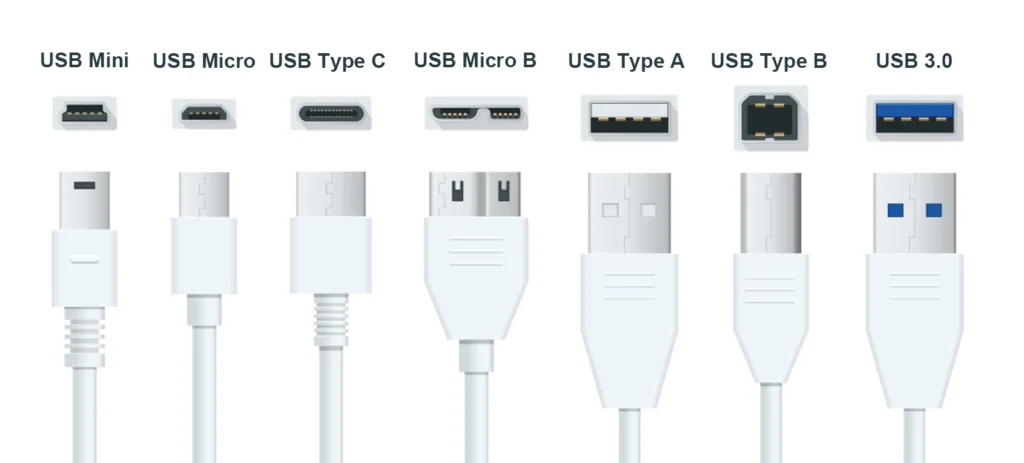
USB Type-A connectors are the most common. Almost every USB cable ends with this flat, rectangular shape. These connectors connect peripherals like keyboards, mice, and external hard drives to computers, gaming consoles, TVs, and other devices. They can only be inserted in one direction, so you might need to try a few times to get it right.
USB Type-B connectors are less standard and are typically used for devices like printers and external hard drives. They are square with slightly beveled edges, making them easy to distinguish from Type-A connectors.
Micro-USB cables are smaller in size compared to Type-A and Type-B connectors. They are commonly used in smartphones, tablets, and digital cameras. The smaller connector size allows for slimmer devices while still providing data transfer and charging capabilities.
USB-C cables represent the latest innovation. They are designed to be reversible and can support higher power transmission levels and faster data transfer rates simultaneously. They are becoming the new standard for many devices, including smartphones, laptops, and tablets. As an added feature, USB-C cables have a symmetrical design, allowing you to insert them in either direction.
4. What is Active Optical USB (AOC USB)?
After understanding USB standards and types, we must mention our latest design and technology in USB cables—the AOC USB Cables.
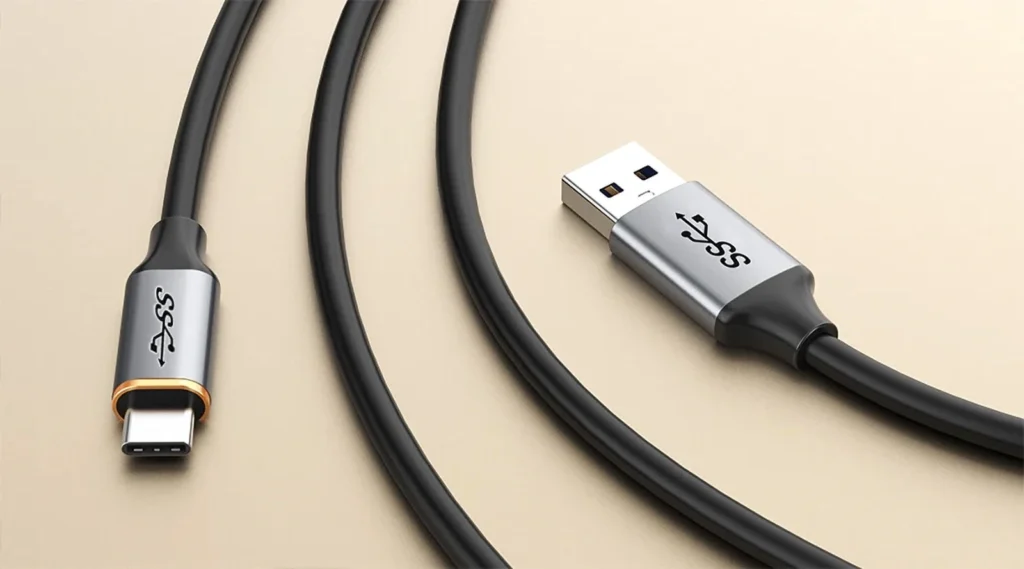
Active Optical Cable USB (AOC USB) is an advanced USB connectivity solution that utilizes fiber optic technology for data transmission. Compared to traditional copper USB cables, AOC USB Cable offers higher transmission speeds and longer distances, making it the optimal choice for the latest generation of high-speed data applications and long-distance signal transmission. It is even considered an ideal choice for future device connectivity.
1. Definition and Components
Overview: AOC USB Cable combines the advantages of traditional USB technology with optical fiber communication, replacing copper wires with optical fibers to enhance the reliability and speed of data transfer. These cables typically feature electro-optical conversion modules at both ends, where electrical signals are converted into optical signals for transmission, and then converted back into electrical signals at the receiving end.
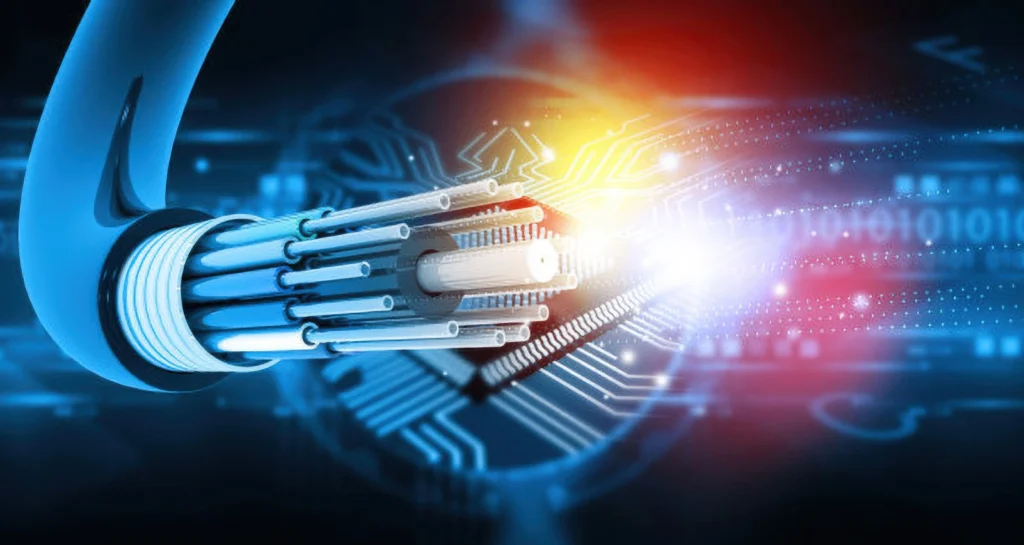
Components: Inside Fiber Optic USB C Cables are photoelectric converters, optical fibers, and corresponding USB interfaces. These components work together to not only meet USB standards but also significantly enhance the performance of signal transmission while reducing the impact of electromagnetic interference.

2. How Active Optical USB Works
Signal Conversion: In USB Activated Optical Cable, electrical signals are first converted into optical signals, which are then transmitted through optical fibers. During long-distance transmission, optical signals experience minimal signal degradation and maintain high transmission speeds. Upon reaching their destination, the optical signals are converted back into electrical signals, efficiently completing the data transmission process.
Signal Transmission: Optical signals travel through optical fibers, which are made of extremely thin glass or plastic, with thickness less than one-tenth of a human hair. Data is transmitted via rapidly propagating light pulses within the fiber optic cable. The central fiber is surrounded by another layer of glass called the “cladding,” which causes the light to repeatedly reflect off the walls of the cable rather than leak out at the edges. This total internal reflection allows the light to travel much further without attenuation.

Data Integrity and Speed: Optical fibers have excellent resistance to electromagnetic interference (EMI) and radio-frequency interference (RFI), making their transmissions less susceptible to interference from motors, transformers, broadcast towers, and even microwaves, fluorescent lights, computers, and televisions. This enables USB Data Over Fiber Optic Cable to maintain data integrity over longer distances while providing higher transmission speeds, making it especially suitable for demanding applications.
3. Key Advantages of Active Optical USB
1. High-Performance Transmission: USB Data Over Fiber Optic Cable supports ultra-high-speed data transmission, ensuring ultra-high data transmission rates ideal for high-speed applications such as 10 Gbps, including AR/VR devices, machine vision systems, storage devices, and data service centers.
2. Long-Distance Capability: AOC USB Cable excels in long-distance transmission, capable of maintaining stable, distortion-free signal transmission over distances exceeding 100 meters.
3. Reduced Interference and Crosstalk: Leveraging optical transmission technology, AOC USB effectively reduces electromagnetic interference, enhancing signal stability and clarity, even in noisy electromagnetic environments, ensuring high-quality connections.
4. Durability and Flexibility: Protected by armored steel and TPE outer materials, AOC Fiber Optic USB Cables are abrasion-resistant and resistant to bending or twisting damage. They can withstand being run over by vehicles without deforming and remain flexible in temperatures below 0°C without becoming rigid. Additionally, fiber optic cables offer high flexibility, allowing them to bend into relatively small radii without damaging their physical structure or compromising signal quality. This makes optical fiber highly valuable in complex conduits, tight spaces, and environments requiring frequent bending. Workers can more easily pull and configure fiber optics in narrow or high-altitude settings.

5. Flexibility and Lightness: Fiber optic cables are typically made from glass or plastic fibers, which have lower material density, helping to ease the load on infrastructure and facilitate installation and transportation. The lightweight and small size of fiber optics allow for more fibers to be accommodated in the same duct or cable tray, saving physical space and improving space utilization.
In summary, Active Optical USB Cable combines modern optical communication technology with USB transmission capabilities, not only meeting today’s demand for faster data transmission and ease of installation but also providing a solid foundation for future technological advancements.
5. Applications and Uses of Active Optical USB Cable
The advent of Active Optical Cable USB (AOC USB) has brought revolutionary changes to various applications requiring high transmission speeds and reliability. Its notable advantages have led to widespread adoption across multiple fields.
1. Data Centers and Cloud Computing
In data centers and cloud computing environments, vast amounts of data are transmitted every second, imposing stringent demands on cable reliability and performance. AOC Fiber Optic USB C Cable, with its ultra-fast data transmission capabilities reaching up to tens of Gbps, becomes the ideal choice for connecting servers, storage devices, and network infrastructure. Fiber optic transmission not only boosts transfer speeds but also significantly reduces data loss and signal degradation caused by electromagnetic interference. Therefore, AOC USB C Fiber Optic Cable is undoubtedly the preferred option in environments requiring high reliability and high performance.
2. Consumer Electronics and Virtual Reality
In the consumer electronics sector, especially in virtual reality (VR) devices, AOC USB, with its exceptional bandwidth and flexibility, supports higher data throughput and rates to ensure a seamless and realistic VR experience. Moreover, AOC USB’s long-distance transmission capability allows users greater freedom of movement, enhancing the overall user experience.

3. Industrial Automation and Control
In industrial automation, various sensors and control systems require reliable long-distance signal transmission to ensure the efficient operation of production processes. AOC USB technology delivers high-performance, interference-resistant transmission solutions, providing effective data communication support for industrial robots and smart manufacturing equipment, thereby enhancing system automation and accuracy.

4. Machine Vision Applications
Machine vision is a technology that uses cameras, software algorithms, and other processing hardware to generate a high volume of video and static images for real-time analysis. Vision systems are utilized across various industries such as automotive, semiconductor, and electronics to inspect product quality and defects. Other common uses include remote collaboration, personnel safety, security, target recognition, automated sorting, measurement, process optimization, and documentation.
Machine vision systems require high-speed data transmission, as well as power and control, to operate effectively in electrically “noisy” environments. Active Optical USB cables provide high-speed data, power, and control. The inherent EMI and EMS immunity of data transmission through fiber optics further ensures and improves data quality, making them an optimal choice for machine vision applications. Machine vision and imaging applications are not only becoming more diverse but also demanding more data, longer distances, higher reliability, simplified interconnect architectures (smaller, lighter, faster), and lower costs. This growth leads to increased demands for video, data, and power optimization, which can be addressed by adopting active optical USB solutions.
6. Comparison Between Fiber Optic USB and Copper USB
Fiber Optic USB Cable (AOC USB) and traditional copper USB cable differ significantly in several aspects. Understanding these differences helps in selecting the most suitable connectivity solution for complex application needs.
| Fiber Optic USB | Copper USB | |
|---|---|---|
| Maximum Transmission Distance |
100M | 5-10M |
| Data Transfer Rate | 10-40Gbps | 5-10Gbps |
| Material and Weight | Glass or Plastic, Very Lightweight | Copper, Heavier |
| Signal Attenuation | Almost 0 Attenuation, High Fidelity | High Attenuation Over Long Distances |
| Interference Resistance | Resistant to Electromagnetic and Radio-frequency Interference, High Signal Integrity | Susceptible to Electromagnetic Interference, Especially Over Long Distances |
| Consumo di energia | Lower | Higher |
| Reliability | Not Easily Affected by Temperature, Humidity, Etc. | Reduced Reliability in Harsh Environments, Affected by Oxidation and Corrosion |
1. Transmission Speed
Fiber Optic USB boasts extremely high data transfer rates, supporting speeds from 10 Gbps to 40 Gbps and even higher, giving it a significant edge in applications that require rapid data processing. In contrast, copper USB (such as USB 3.0 and below), while still robust, is physically limited by electrical signal constraints, usually achieving speeds of only a few Gbps under ideal conditions and subject to degradation over distance.
2. Transmission Distance
In terms of transmission distance, Fiber Optic USB is the clear winner. The fiber-optic medium allows signals to remain stable and efficient over distances of 100 meters or more without being affected by electromagnetic interference. Copper USB, limited by its material properties, typically achieves optimal transmission over 3 to 5 meters, with longer distances often resulting in signal degradation and reduced reliability.
3. Electromagnetic Interference (EMI) and Signal Integrity
Since Fiber Optic USB transmits data via optical signals, it has a natural immunity to electromagnetic interference, ensuring signal integrity in environments with high electromagnetic demands. Conversely, Copper USB transmits electrical signals, making it highly susceptible to EMI, particularly in industrial or high electromagnetic noise areas, where signal quality may be significantly challenged.
4. Bulk and Flexibility
Copper USB cables are generally bulkier than Fiber Optic USB cables, especially when shielding for EMI reduction is required. On the other hand, Fiber Optic USB is favored for its lightweight and flexible design, making it easier to manage and deploy in environments requiring complex wiring or long-distance flexible arrangements.
5. Cost and Energy Consumption
The cost of Fiber Optic USB is typically higher than Copper USB, primarily due to its complex internal opto-electronic conversion components and advanced optical materials. However, as technology becomes more widespread and production scales up, costs are gradually decreasing. Even though Fiber Optic USB requires active conversion components, it is more energy-efficient for long-distance transmission. From a long-term cost-effectiveness perspective, particularly in large-scale deployments, Fiber Optic USB may be more economical.
Conclusion
Active Optical USB Cable (AOC USB), as a cutting-edge connectivity technology, has demonstrated its irreplaceable value in many demanding environments. With its superior transmission speed, long-distance capability, and strong resistance to interference, along with its potential for future development, AOC USB Cable is setting new standards in data transmission.
In today’s rapidly evolving information and communication technology landscape, USB Active Optic Cable not only meets the current demand for fast and stable data transmission but also heralds a new frontier for USB technology by supporting higher data rates and bandwidths. Its successful application across fields such as data centers, VR devices, and machine vision is a testament to its robust functionality.
Looking ahead, AOC USB technology will continue to evolve by integrating the latest interface standards, improving energy efficiency, expanding IoT applications, and enhancing security features, thereby further solidifying its technological advantage. As manufacturing costs decrease and market demand increases, we can anticipate more widespread adoption, accelerating advancements in data transmission across various industries.
However, as we pursue technological progress, it is crucial to consider the environmental and social impacts and to focus on energy efficiency and eco-friendliness, achieving sustainable development. This responsibility lies not only with technology providers and industry but is a challenge that society as a whole must address.
In conclusion, AOC USB technology is influencing how we manage and transmit data, providing a solid foundation and unlimited possibilities for a digital future. In this data-intensive era, the new generation of active optical USB will be a key driver for a smarter, more efficiently connected world.
FAQ
Q1: What is the difference between AOC and DAC cables?
A1: AOC (active optical cable) and DAC (direct connect copper cable) mainly differ in materials, transmission capacity, power consumption, price and application scenarios. AOC cables use optical fiber technology to achieve long-distance, high-speed transmission of signals through photoelectric conversion, which is very suitable for applications that need to maintain signal integrity and avoid electromagnetic interference. They are usually lighter and more flexible. In contrast, DAC cables are made of copper wires and are suitable for short-distance electrical signal transmission. They are susceptible to electromagnetic interference and signal attenuation in long-distance transmission. Therefore, AOC is mostly used in scenarios that require high performance and long distances, while DAC is only suitable for short-distance deployment.
Q2: What is a USB active optical cable?
A2: USB active optical cable (AOC) is a fiber optic cable used to connect USB devices, combining optical fiber and conversion technology to achieve long-distance, high-speed data transmission. Unlike traditional copper cables, USB active optical cables use optical signals for data transmission, which can effectively reduce signal attenuation and electromagnetic interference. Due to its lightweight and flexible design, this cable is ideal for applications that require high-speed data transmission and long connection distances, such as virtual reality, data centers, machine vision, and industrial environments.
Q3: What is the speed of AOC cables?
A3: AOC cables can support ultra-high-speed data transmission rates of 10Gbps, ensuring fast performance in applications that require fast data processing. (If the materials and processes are excellent, it may reach 40Gbps. Of course, the price will be beyond imagination, and it is usually only used in scientific research scenarios)
Q4: Can I use any USB C Fiber Optic Cable for power supply?
A4: Not all Fiber Optic USB C Cables support power supply, and the power supply power of each USB-C cable is also different, with different specifications ranging from 5V/3A, i.e. 15W to 20V/5A, i.e. 100W or even 240W (only in the theoretical stage of scientific research). Therefore, it is crucial to check whether the power supply capacity of the cable specifications can meet the requirements of the equipment.
Q5: What is the difference between 100g AOC and 100g DAC?
A5: 100g AOC cable uses optical fiber for long-distance high-speed transmission, and performs photoelectric signal conversion to achieve data transmission. In contrast, 100g DAC cable uses copper wire and uses electrical signals for short-distance transmission. AOC is suitable for data transmission that requires longer distances, while DAC is only suitable for short-distance connections. 100g DAC cable is made of copper cable, which is usually heavier and may be affected by electromagnetic interference. 100g AOC cable has lighter weight and less electromagnetic interference, and has greater flexibility and stability. With the same weight, AOC can be made longer.
Q6: What is the difference between active USB and passive USB?
A6: The main difference between active USB cable and passive USB cable is signal processing and transmission distance. Active USB cables contain electronic components to amplify and process signals, supporting longer transmission distances (usually more than 5 meters for copper USB and up to 100 meters for fiber USB) to ensure signal stability and integrity. These cables sometimes require additional power supply, while passive USB cables do not contain signal enhancement devices and rely on standard USB protocols to transmit data. They are usually used for short-distance connections within 5 meters and do not require additional power support. Active cables can be used to achieve long-distance connections in scenarios such as data centers and machine vision, while passive cables are suitable for daily short-distance device connections.
Q7: How do USB active fiber cables work?
A7: USB active fiber cables work by converting electrical signals into optical signals, then transmitting them through optical fibers, and finally converting the optical signals back to electrical signals at the other end. This technology allows data to be transmitted over long distances with high bandwidth and low latency, and is not susceptible to electromagnetic interference. At the starting end of the cable, there is an electro-optical converter that converts the incoming electrical signal into an optical signal; at the receiving end, there is an optoelectronic converter that converts the optical signal back to an electrical signal. These two conversion processes are achieved through electronic chips integrated inside the cable, allowing signals to be transmitted quickly and efficiently in the optical fiber. Due to the low signal loss and high anti-interference of optical fiber, USB active optical cables can support longer distances than copper cables while maintaining high data transmission speeds. Such cables are often used in applications that require high performance and long-distance connections, such as data centers and virtual reality and machine vision.
Q8: Do active optical USB cables require power?
A8: Yes, active optical USB cables usually require additional power to support signal conversion and amplification functions. From the host device or external power source) Although they mainly transmit data through optical fibers, in order to convert electrical signals to optical signals (and optical signals back to electrical signals), these cables often need to obtain power from the USB interface itself or through an external power adapter. This additional power support ensures that electronic components can operate effectively, so that the signal remains stable and intact during long-distance transmission.
Q9: What is an armored USB optical cable?
A9: An armored USB optical cable is a specially designed optical fiber cable with an additional mechanical protection layer, usually made of metal or other strong materials, used to increase the durability and damage resistance of the cable. This armor layer protects the fiber core from physical damage, compression, and external environmental factors such as squeezing, pulling, bending, rodent intrusion, etc. The armored design makes these fiber optic cables particularly suitable for use in industrial environments, outdoors, or other scenarios that require higher physical protection, ensuring the security and reliability of data transmission while maintaining the high speed and long-distance characteristics of fiber optic transmission.
Q10: When should armored fiber optic cables be used?
A10: Armored fiber optic cables should be used in environments that require additional mechanical protection to resist physical damage and harsh environmental conditions. Specific situations include industrial or manufacturing environments where cables may be exposed to heavy equipment or mechanical operations and are prone to damage; in outdoor environments, cables need to resist weather changes, rodents and other wildlife damage; when laid underground or hidden in walls, armored cables can withstand pressure in the soil and interference from construction projects. In addition, in high-traffic areas or public places, the use of armored fiber optic cables can prevent signal interruptions caused by stepping on or rough operation. In short, armored fiber optic cables are suitable for any application scenario where cable reliability and long-term stability need to be ensured.
Q11: What is the difference between armored cable and TPU flexible cable?
A11: The main difference between armored cable and TPU flexible cable lies in their protection and flexibility characteristics. Armored cable has a solid metal outer layer. This design provides strong physical protection for the cable and can resist external mechanical damage, compression and environmental impact. It is suitable for industrial or outdoor occasions. It focuses on durability and protection. TPU flexible cable uses thermoplastic polyurethane (TPU) as the sheath material. It has extremely high flexibility and wear resistance, tear resistance, oil resistance and cold resistance, making it very suitable for occasions that require bending, movement or dynamic applications and extreme cold environments below 0 degrees Celsius, such as robots, automated machinery and other equipment. The cable emphasizes flexibility and long life in frequent movements. Therefore, armored cables provide higher mechanical protection, while TPU flexible cables emphasize flexibility and mobility.
Prodotti pertinenti

USB3.1 Gen2 AOC-Active Optical Cable
AM to Micro B, 10Gbps, length up to 100m
for machine vision cameras
More Options
-
 Fiber Optic USB C Cable 15ft(5m)-8K Video-10Gbps Data-100W Power Delivery
Fiber Optic USB C Cable 15ft(5m)-8K Video-10Gbps Data-100W Power Delivery -
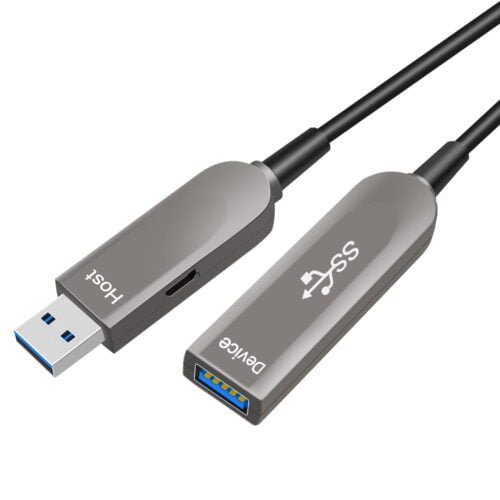 Fiber Optic USB 3.1 AOC-Active Optical Cable,Gen-2,10Gbps,AM to AF,100m
Fiber Optic USB 3.1 AOC-Active Optical Cable,Gen-2,10Gbps,AM to AF,100m -
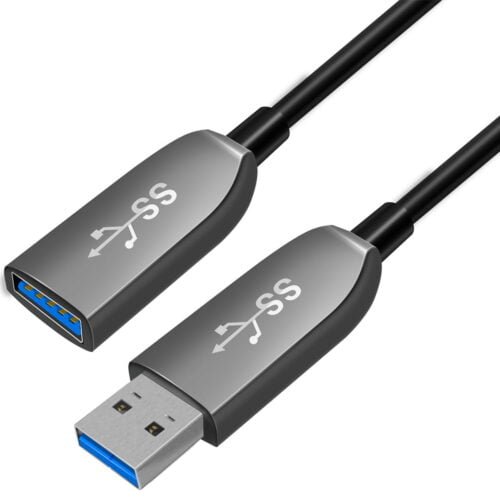 Active Fiber Optical USB 3.0 Extension Cable,AM to AF,5Gbps,100m
Active Fiber Optical USB 3.0 Extension Cable,AM to AF,5Gbps,100m -
 15m USB3.2 Gen2 type-C Fiber Active Optical Cable 8K Video 10G Data PD60W
15m USB3.2 Gen2 type-C Fiber Active Optical Cable 8K Video 10G Data PD60W -
 10Gbps USB 3.2 GEN2 Type-C AOC-Active Optical Cable
10Gbps USB 3.2 GEN2 Type-C AOC-Active Optical Cable -
 15m USB3.2 AM to USB-C Fiber Active Optical Cable
15m USB3.2 AM to USB-C Fiber Active Optical Cable -
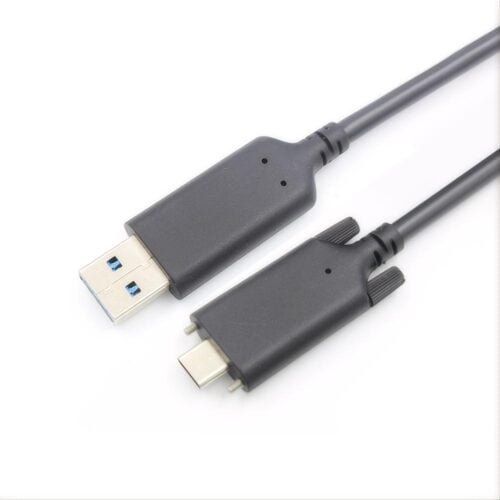 USB3.2 Fiber Optic AM to type-C AOC-Active Optical Cable
USB3.2 Fiber Optic AM to type-C AOC-Active Optical Cable -
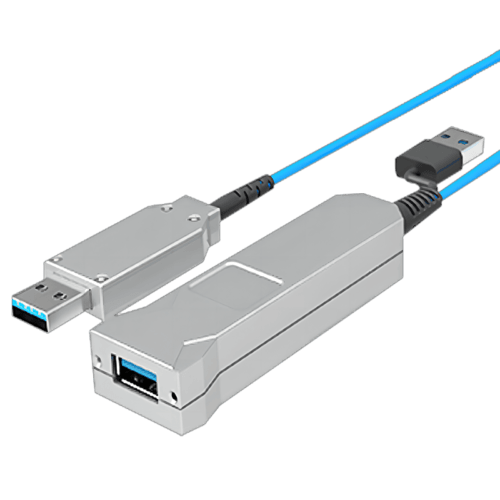 USB3.1 Fiber Active Optical Extension Cable-AM to AF-100m
USB3.1 Fiber Active Optical Extension Cable-AM to AF-100m -
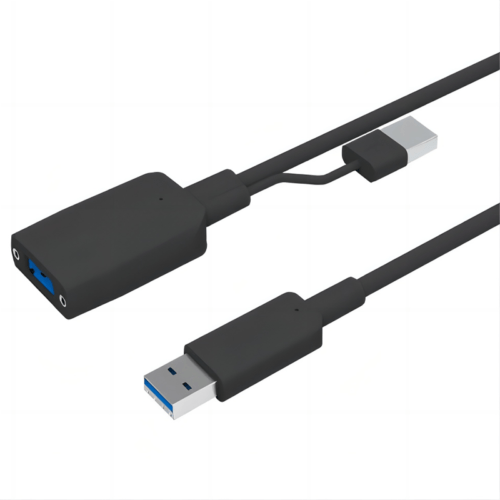 USB3.2 Active Optical Extension Cable-type A Male to Female Y Cable Power Supply
USB3.2 Active Optical Extension Cable-type A Male to Female Y Cable Power Supply


